Experimenting with Cheese Leftovers
Introduction 🖊
This week I tried out biomaterials made with leftover camemberg cheese.
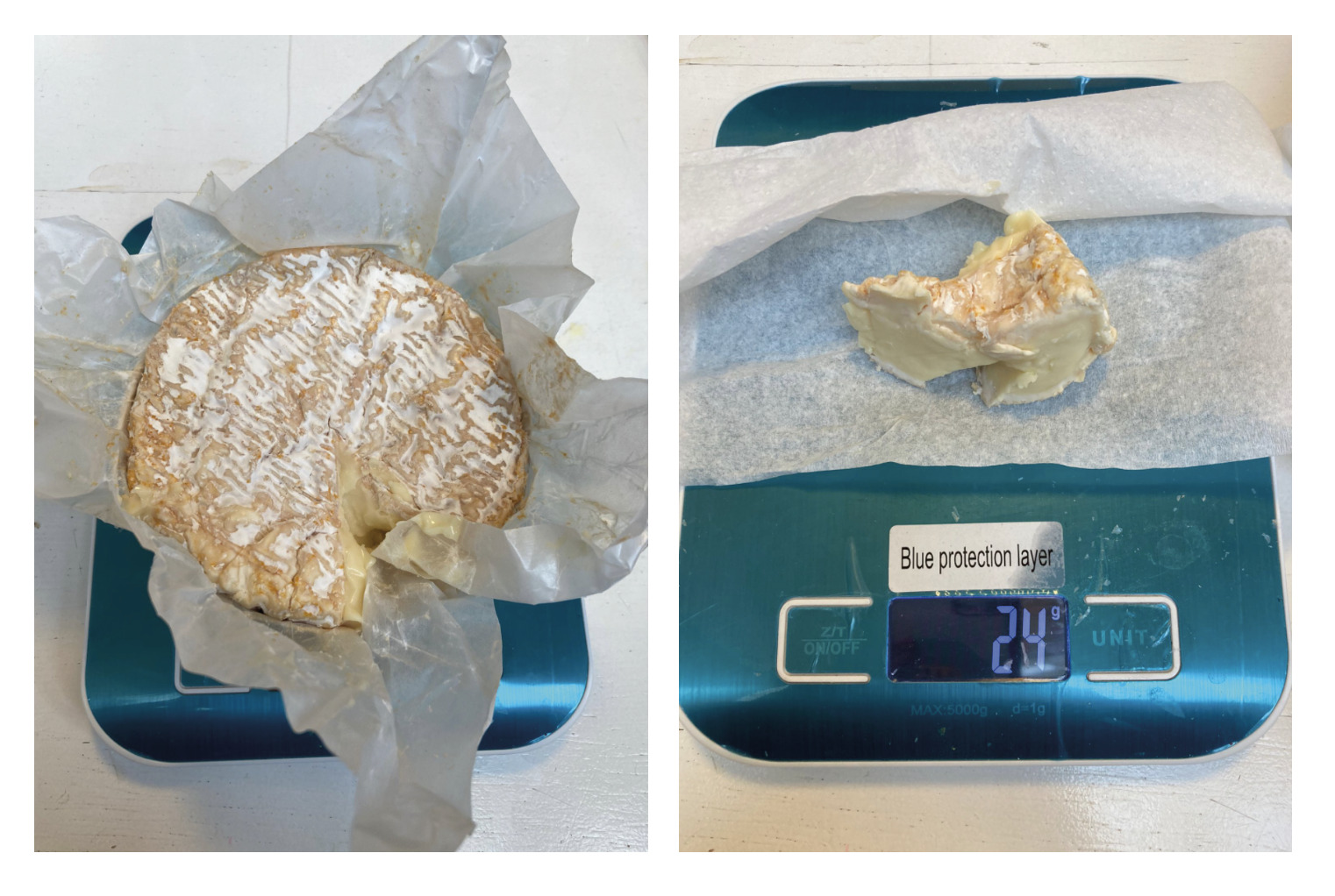
My Goals 🎯
- What I think I already know:
- Not much about how to make biomaterials with cheese leftovers.
- What I want to learn:
- Make materials mixing cheese leftovers with Gelatine as structural component.
- Make a material where the cheese bacteria is killed and where it is still alive.
Project Management 🔢
How I am going to organize my work:
| Task | Time | Day |
|---|---|---|
| Research | 5h | 22 / 23, February |
| Preparation | 30 min | 25, February |
| Development | 3h | 25, February |
| Results waiting time* | 1 Week | 3, March |
| Documentation | 1h | 3, March |
*Time needed in order to check the final materials results. Bio-Materials grow / change their apperiance depending of time.
Research 🤓
I did research about ways to work with cheese to make bioplastics, but did not find anything concrete about it jet. I just found this milk recipe:
Bio-Materials made from Milk / Cheese:
During the Process
Results 🌸
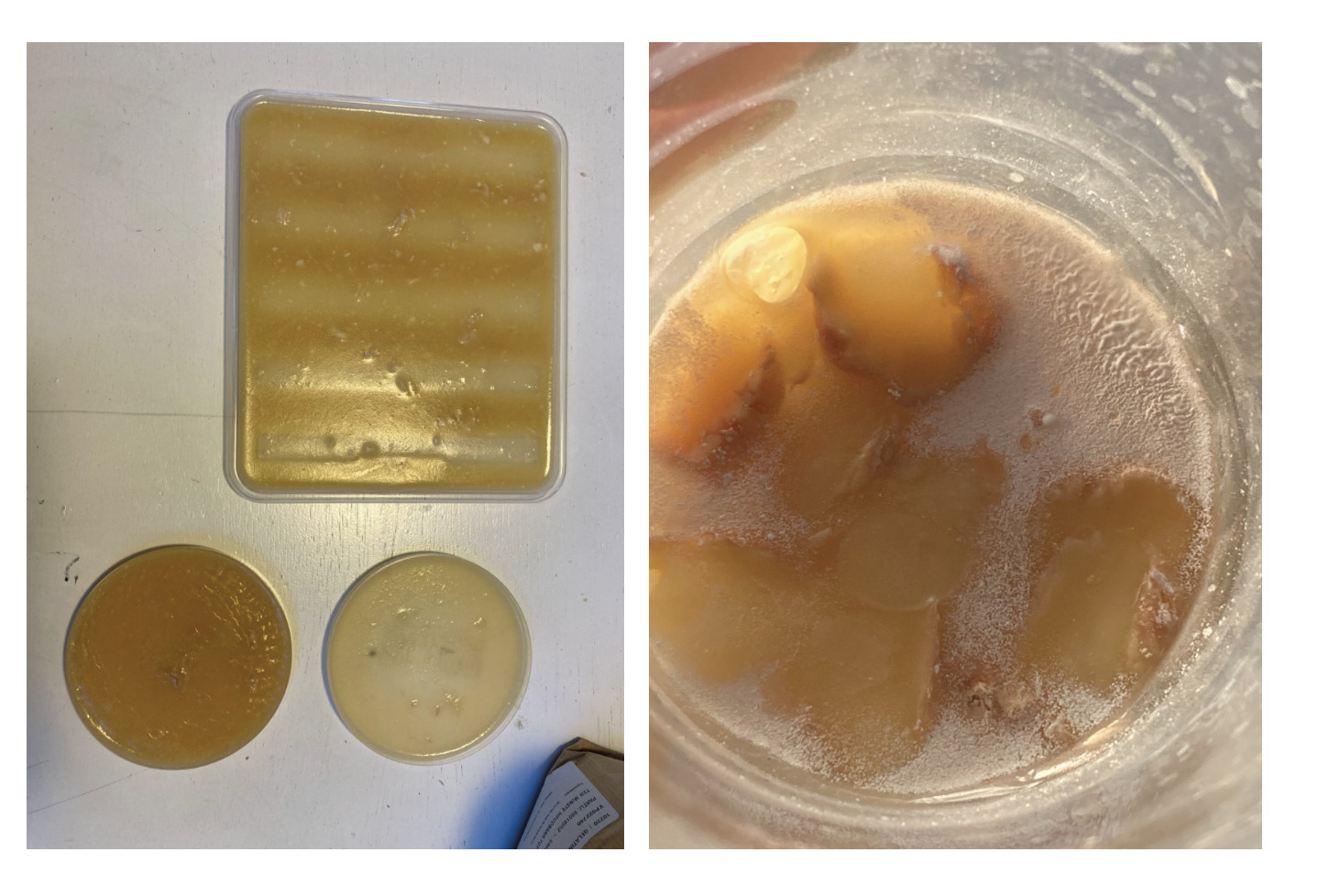
Material creation 🧑🎨
Ingredients
I did tried 3 different mixes to create the materials:
| Test Nº | Name | Quantity | Unit |
|---|---|---|---|
| Test 1 | Camemberg | 25 | gr |
| Gelatine | 10 | gr | |
| Water | 10 | ml | |
| Glycerine | 10 | gr | |
| Test 2 | Camemberg | 25 | gr |
| Gelatine | 10 | gr | |
| Water | 60 | ml | |
| Glycerine | 3 | gr | |
| Test 3 | Camemberg | 25 | gr |
| Gelatine | 20 | gr | |
| Water | 60 | ml | |
| Glycerine | 3 | gr |
Tools
I used this tools to make the precious material:
- Pot
- Stove
- Spoons
- Moulds
- Thermometer
Process
| Test Nº | Process |
|---|---|
| Test 1 | Heat up all the ingrediets at 60º - 80º T for 30 minutes. Then heat up again the mix for 10 minutes at 100º T to be sure the cheese bacterias are killed. Pour the material in a mold |
| Test 2 | Heat up all the ingrediets at 60º T for 10 minutes. Pour the material in a mold. I tried out a shaped mold to check out the final texture |
| Test 3 | Heat up the water, the gelatine, and the glycerine at 60º T for 20 minutes. Pour the mix into a jar. Wait for the material to cold down and reach 25 ºT. Add little pieces of cheese to it - at 25º T the cheese bacteria would be alive -, mix it all together, and pour the material into a mold |
Process
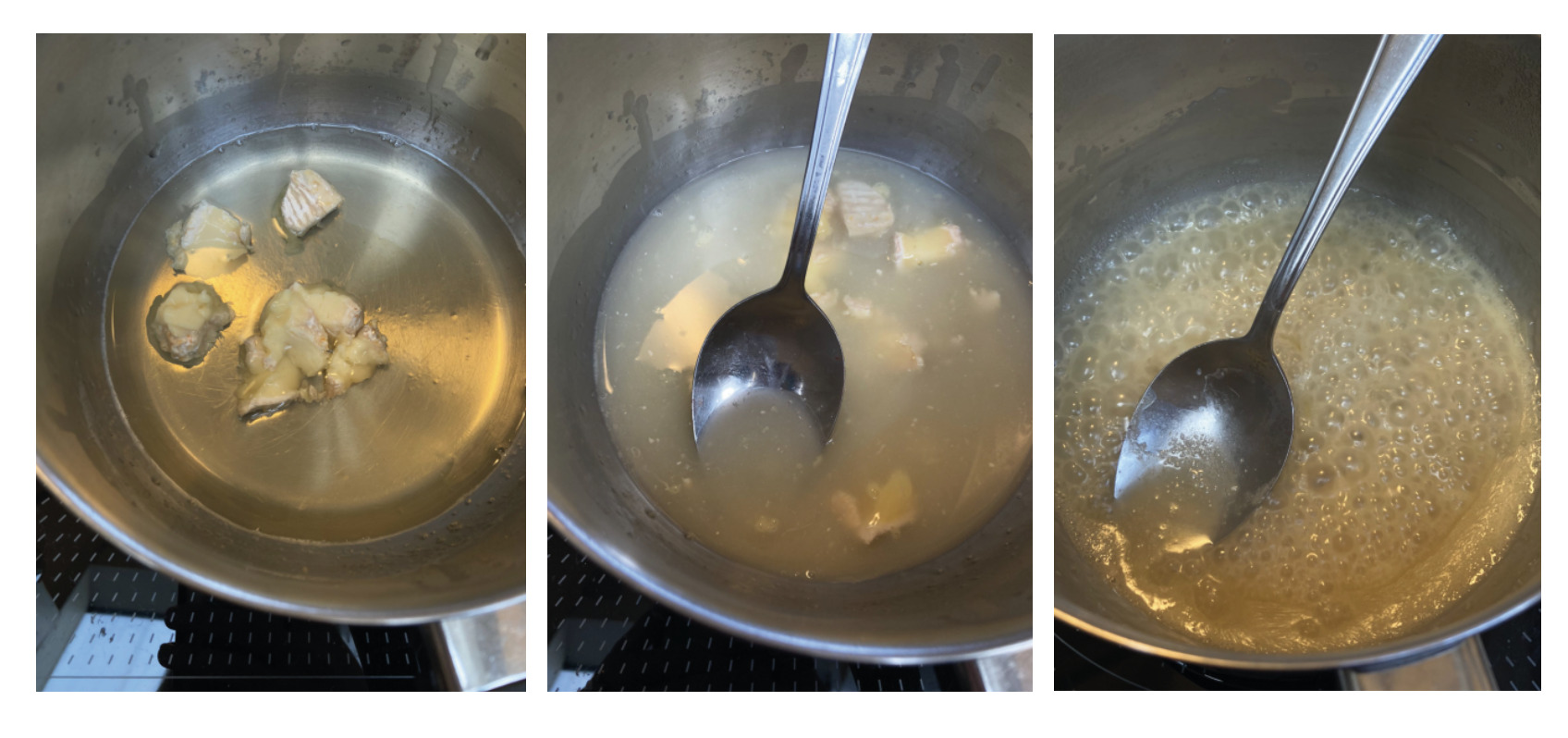
Test 1

Test 2
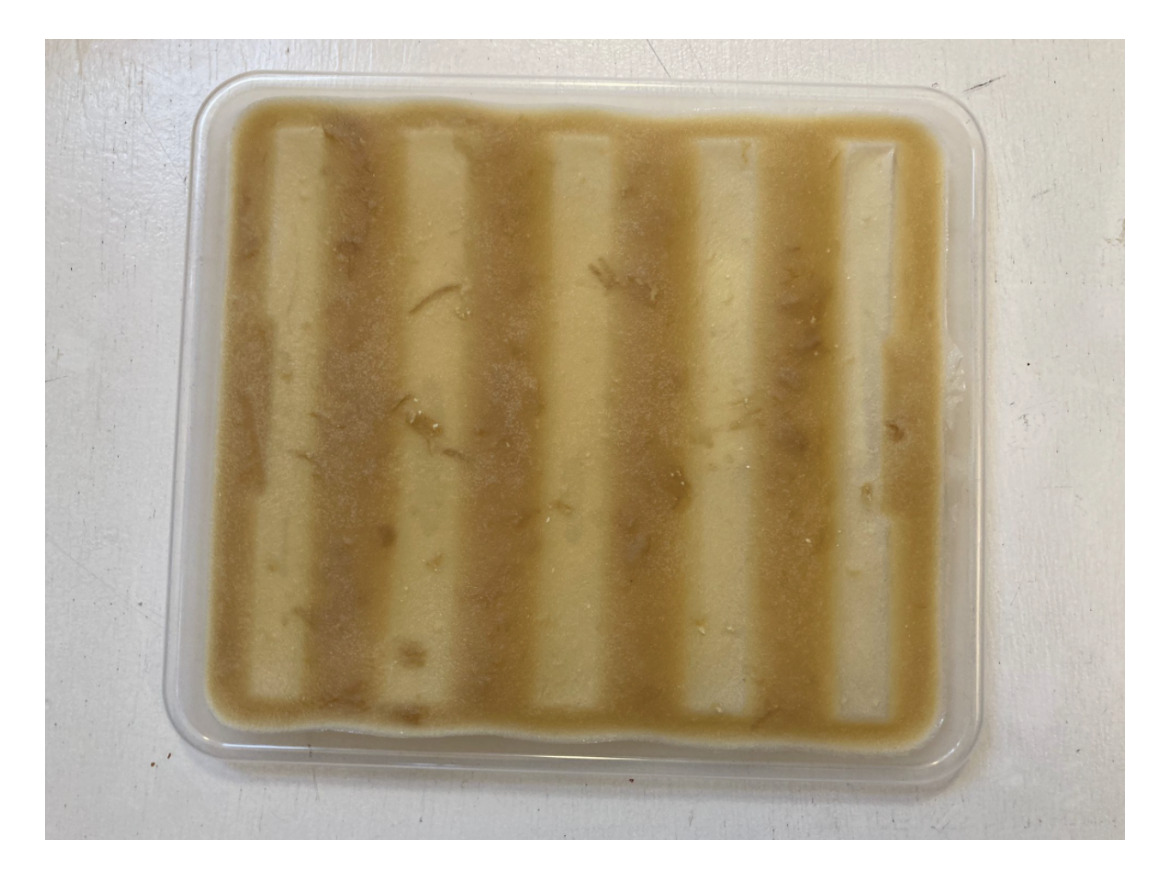
Test 3
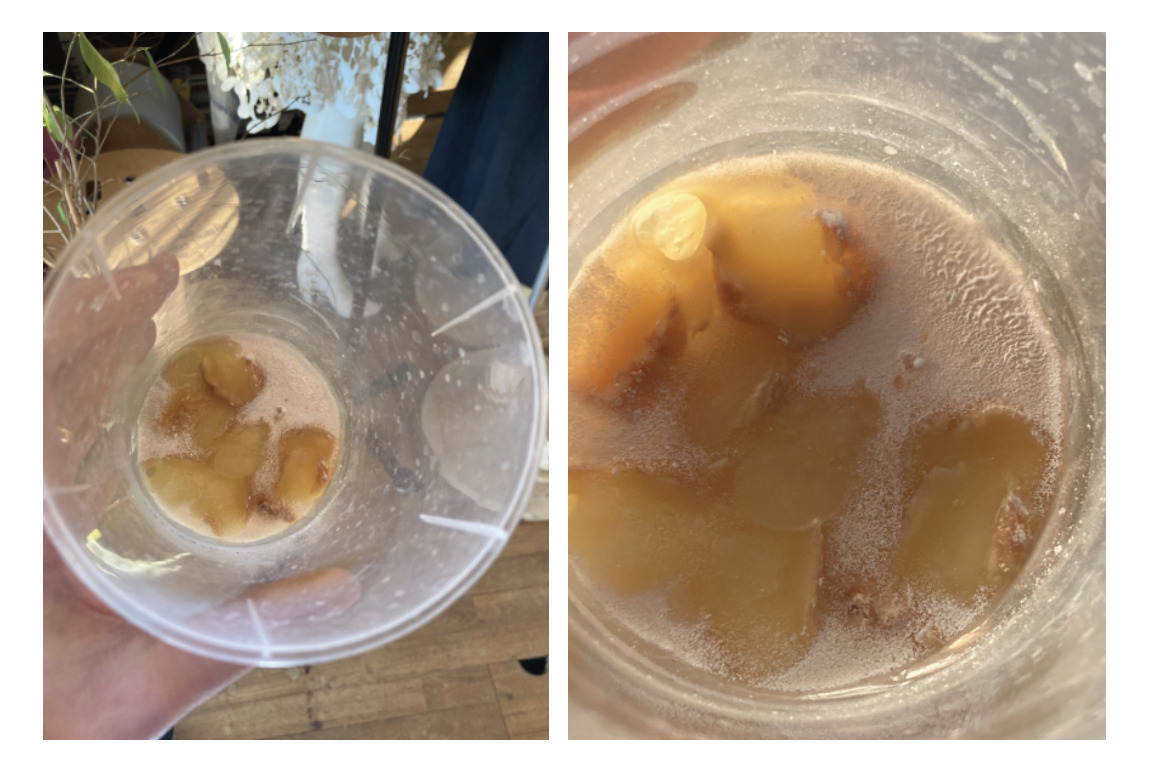
Retrospective 🤔
This experiment turned on being very smelly and unexpected.
Since I did not find much information about materials made of cheese, I did not know how it could result.
Test 1 after 2 weeks showed bacteria growing on the surface and was still smelly.
Test 2 resulted in being the one showing the better features if used to develop future fabrics/objects with it.
Test 3 showed a big bacteria growing on the full surface, making the material interesting to analyze from a bio-hack point of view.